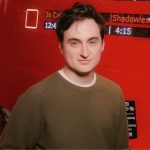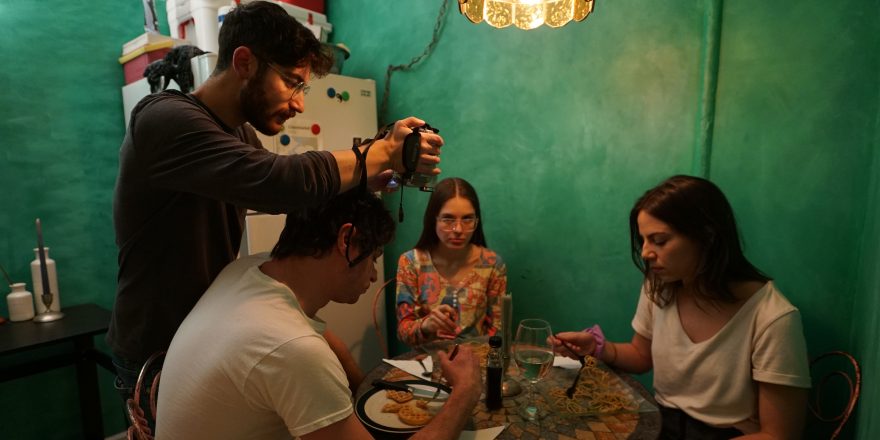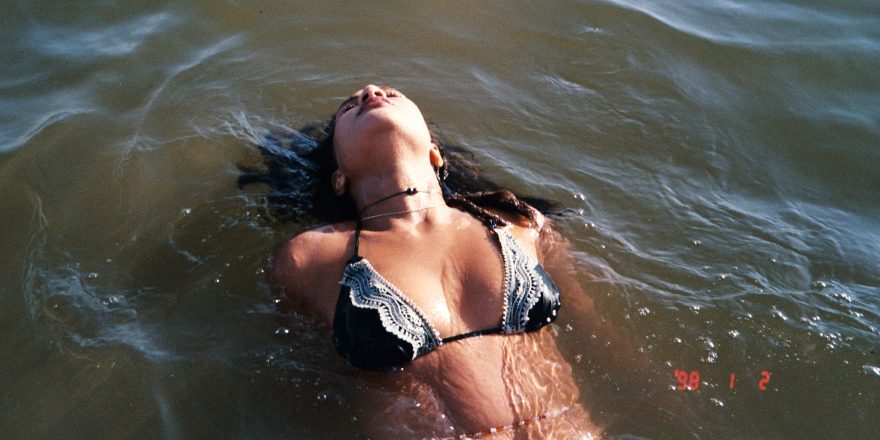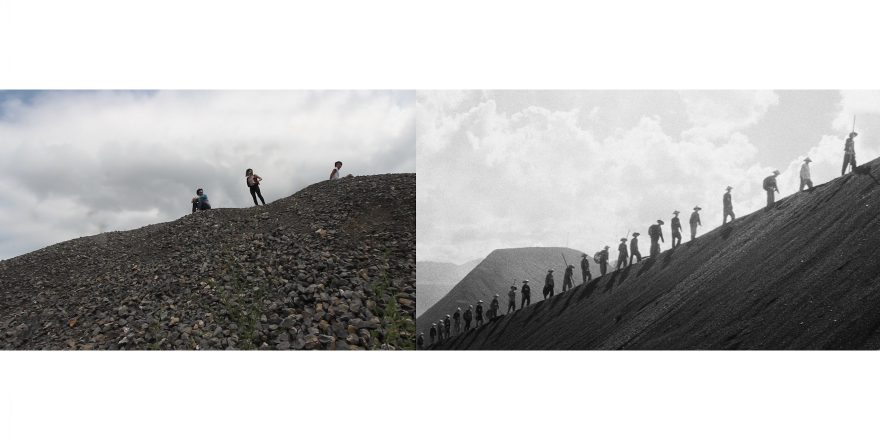Three years ago, when I first decided to try to get the ball rolling on my new movie, Free Time, it was not something I thought I’d still be worrying about in the summer of 2024. I had hoped to shoot it, edit quickly, share it around a bit, and be able to move on a year or so later. There were other projects I was interested in and the idea of doing the movie was a bit of a lark. I told myself we could pull it off like a weekend exercise – just longer.
Talk about naive! Instead, I lived with the movie for about three years and still am. I’m writing this on the morning the film becomes digitally available, which means my active journey with it might finally be drawing to a close. It’s become more entwined with my memories of the past few years than I could have expected – floating over and connecting people, places, feelings.
Recently, I’ve found myself particularly drawn to thinking about the locations where we spent the 10 days shooting Free Time. So, I pulled up some behind-the-scenes photos that one of our producers, Nolan Kelly, took on the set to help aid with this recollection.
Here are some of those photos, and some of those spaces.
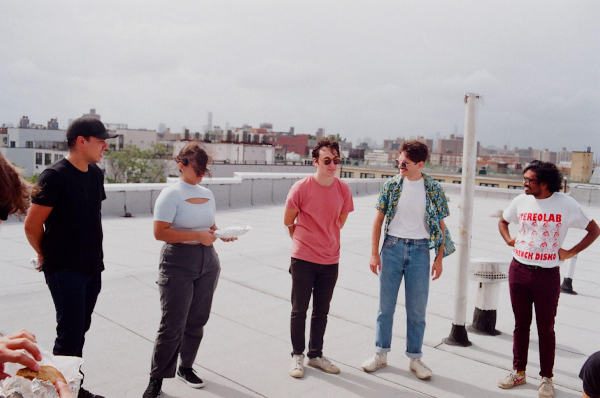
This is from the very first day of the shoot, close to the moment we all first arrived on set. We were shooting a party scene at our friends Rachel and Stephen’s place. They generously let us take over their entire apartment. This is on their building’s roof, where I had been just a few weeks earlier for a Fourth of July party – conveniently timed inspiration.
Sometimes making a movie can feel like pulling a lever and unleashing a chain of human suffering upon everyone you know. All of a sudden, friends and strangers alike are waking up at ungodly hours of the morning, carrying too-heavy things up multiple flights of stairs, invading every inch of people’s personal spaces, and generally spreading chaos and destruction across the land.
Of course, there are many wonderful, amazing, positive things about the experience of making a movie – and those are the ones that tend to stick in your memory later on. But I have done this enough now to remember the rush of dread on the first day or two of shooting – the realization you have taken a great many people down a path that, in many instances, can be less than pleasant.
On the first day of Free Time, we had planned to have everyone who didn’t need to be in the apartment hang out on the roof, but, of course, it ended up pouring, meaning everyone was forced inside, into the apartment or the hallway outside. There was a lot of us, and it was a very small space. It quickly got overwhelming.
To make matters worse, I was incredibly rusty at directing. And I had never directed anything on the type of schedule a 10-day feature film shoot required. I was moving slow. We quickly fell behind and I struggled to shoot scenes as we had intended. Colin Burgess, our lead, left that day wondering what exactly he had committed himself to. I was wondering the same.
Ultimately, it turned out fine. Our editor Byron Leon made the footage we shot on the first day work well enough. Our AD and producer, Paula Gonzalez, got our ship in order. We started to get into a groove by Day 2 and by the end of the week we were sailing along at a faster clip, and there was only a normal-movie amount of suffering left to endure – but I still get embarrassed thinking about that first day.
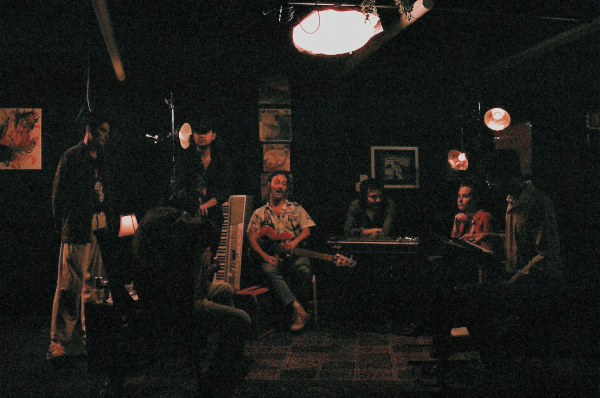
This shot is from the day of the band rehearsal scenes at Life World, which was a DIY venue in Gowanus run by a great group of artists. It was, essentially, a black box on the second floor of a factory. It closed down abruptly last September and I miss it very much. It had opened only about a month or two prior to us asking to shoot this scene.
I had written the band sequence with Michael Patrick Nicholson in mind, and he brought in his real ensemble, Leon Sinks. We borrowed some songs he had written and somewhat exaggerated their country elements for comedic effect. It was a busy day – we were trying to shoot 13 pages, which included two musical performances. Alex Bliss came in to play the band’s manager, even though we basically had just met.
Life World was only around for about two years, but it provided exactly what I felt I had come to New York looking for – a hub, a magnet-point for people to try things out, meet one another and see each other with some degree of semi-regularity. Sometimes no one would be there and sometimes there would be too many people. It was open a shocking number of nights a week and must have taken endless hours of work to maintain and operate. I’m grateful to the whole Life World team for putting those hours in and keeping the space open as long as they did.
A lot of places we shot the movie in no longer exist. Daughter, a coffee shop near my apartment in Crown Heights, shut down in December. Much of East River Park was demolished shortly after we were there. People lived in apartments and then left them. Businesses on the blocks we shot on closed.
A movie is always going to serve as a time capsule, and a movie set in New York doubly so – that’s the nature of this place, always in transition. But I was surprised at how quickly it happened. By the time we completed Free Time, it already felt like it was of a different era.
Two years after shooting there, we screened the movie for the cast and crew at Life World and had a party after. It was a nice night.
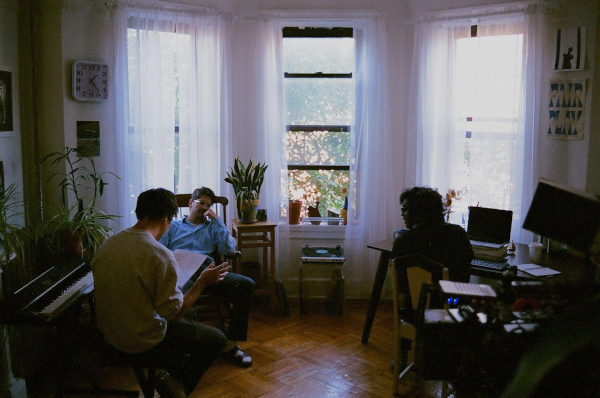
We shot a lot of Free Time in my dear friend (and one of our producers) Justin Zuckerman’s apartment. I like this photo because you can see a lot of the great touches our production designer Ale Añez had brought to this room that didn’t end up actually getting on camera. Shooting at Justin’s meant she could go in there whenever she wanted in the lead-up to the shoot, bringing items a few at a time, slowly adjusting things at her own pace.
This was the second movie we had shot in Justin’s apartment. He directed a film I produced, Yelling Fire in an Empty Theater, when he first moved in. It was undeniably a great apartment with a more distinct visual sensibility than most places people we knew were living in. Plus, it was about a 10-minute walk from my own apartment. Perfect.
If you’re going to make a small movie, it’s helpful to have some kind of home base. For a few years and multiple projects, Justin’s apartment provided this. It was our production office, soundstage, storage unit and rehearsal space. It was where we hosted both kick-off and wrap parties. I wrote the first draft of Free Time there, during the earlier months of the pandemic, blocking out the scenes in my head as I sat in the room.
Justin’s since moved to Washington, D.C., and I haven’t been to the apartment in a few years, though I walk past the building all the time.
I don’t know how many people have seen both Free Time and Yelling Fire – it can’t be very many – but I wonder if anyone has noticed both feature the exact same space.
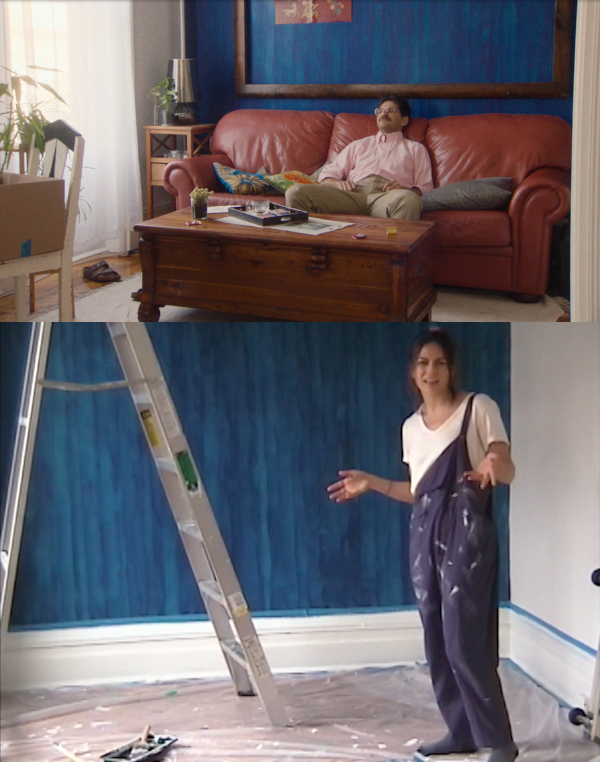
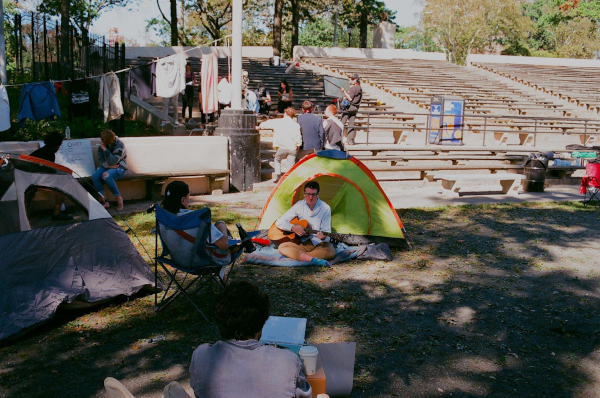
There’s a big park scene in the movie. Let’s not spoil it. The initial idea was to shoot this scene in Prospect Park, but it felt too far for the character of Drew to go from his office in Manhattan. So Nolan Kelly, our producer and the eye behind all of these photos, suggested East River Park.
The honest truth is I had never been to East River Park. It’s a 20-minute walk from the nearest train station. You could take the ferry there. I thought it was absolutely beautiful. There was a big amphitheater that Nirvana and other bands had played in during the ’90s. People seemed to go there for various group activities. The night of our shoot, a group of musicians came and used it for a song circle. On another visit, an early scout, it was home to a wake.
We were worried about getting shut down because we hadn’t been able to hear back from the city about getting a permit. But we had no problems the whole day. Many a passersby came and watched, but everyone seemed to believe we were supposed to be there.
Despite initial worries, everything went smoothly. Friends popped in and out to help. Our small sea of extras became friends, playing games or music between takes. It was weirdly idyllic.
Mere weeks after we wrapped, bulldozers came to the amphitheater and the park and demolished the whole thing. They’re building a new park now, but there’s no way it’ll be as nice as what was there before.
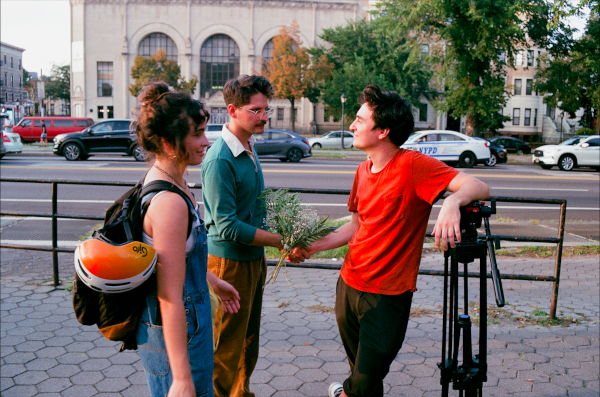
This is at the end of us doing some pick-ups, two years ago. We’re standing on Eastern Parkway and Nostrand Avenue, and we’ve just completed the final shots of the film – Colin walking down the block (that we won’t end up using) and Colin running into the subway turnstile (in the year between shooting and this pick-up, the subways have gone from MetroCards to tap-to-pay.)
This stretch of Eastern Parkway is still there, unchanged. It’s one of the only spaces in the film that I’d imagine will be recognizable 40 years from now, at least based on the photos I can find of the same intersection in 1984. Forty years from the shoot will be 2061, I will be 68.
I’m thankful for a great many things about the Free Time experience – and grateful for the small life it’s had traveling around people’s screens. But I’m most thankful that it served as a catalyst to bring many people into my life who otherwise may not have entered it, or gave a compelling reason to become closer to those who already were. I’m also grateful that it gave me a reason to go to places in the city I might not have otherwise, or committed to memory spaces I once spent ample time in and now no longer do.
Every movie is a document of the people and places it made of. It’s a yearbook. It very literally puts a frame around a moment in time. Making a movie can be hell sometimes, sure. But if you can keep the things that make it hell mostly at bay – it’s not such a bad way to fill up your time. It` gives you a lot of good stuff to look back on.



